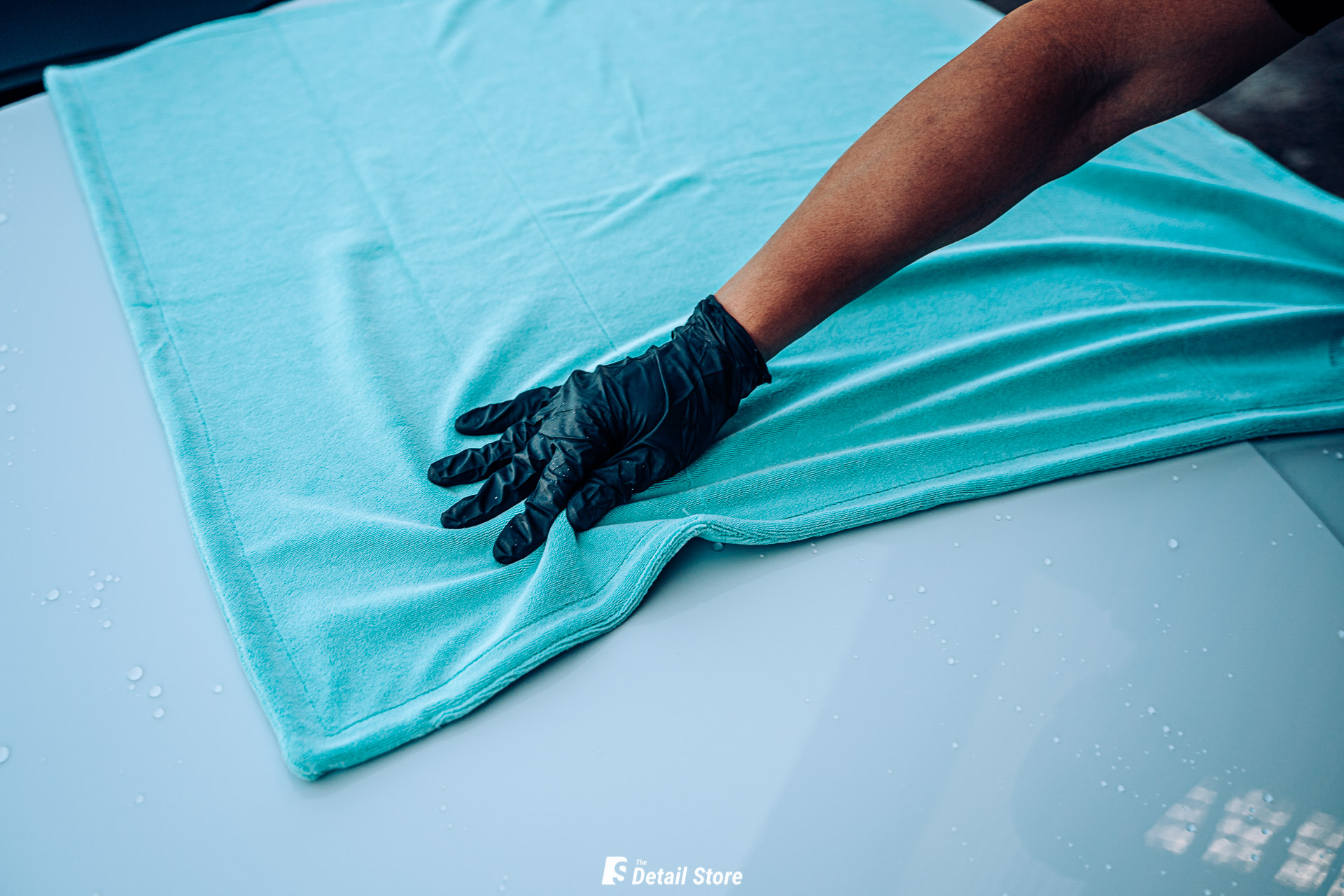When it comes to car detailing and cleaning, having the right tools can make all the difference.
Microfibre towels have become a staple for their superior cleaning power, absorbency, and versatility. Choosing the right microfibre towel can elevate your detailing game, ensuring a scratch-free, streak-free finish every time.
This guide will walk you through what makes microfibre so effective, how to select the best towel for specific tasks, and tips for care and maintenance.
What is Microfibre?
Microfibre is a synthetic material known for its ultra-fine fibres, which are much smaller than a human hair.
Typically made from a blend of polyester and polyamide, microfibre’s fine structure allows it to trap dirt, dust, and moisture effectively, making it a popular choice for cleaning tasks.
Its microscopic fibres have high absorbency and cleaning power, effortlessly lifting dirt and grime without leaving streaks or scratches. This unique structure also makes microfibre towels quick-drying and durable, perfect for car detailing.
Composition of Microfibre Towels
Microfibre towels are crafted from a blend of:
- Polyester (70-80%): This provides structure and durability. Too high of a percentage, though, can make the towel less plush and reduce water retention.
- Polyamide (20-30%): This component enhances the towel’s softness, absorbency, and durability. The mix ratio often appears as 80/20 or 70/30 in the detailing world.
Impact on Performance:
- Higher Polyamide Content (e.g., 70/30 blend): Offers superior softness and water absorption, making it suitable for delicate surfaces like vehicle exteriors.
- Lower Polyamide Content (e.g., 80/20 blend): More suited for tasks requiring higher durability.
Understanding Microfibre Weave Types
The weave of a microfibre towel significantly influences its performance and purpose:
- Circular Weave (Eagle Edgeless): Ideal for applying detailing products due to its even absorbency and smooth finish.
- Twisted Loop Weave: Highly absorbent, making it the top choice for drying large surface areas quickly without streaking.
- Pearl Weave: Perfect for levelling ceramic or quartz coatings. Its unique texture ensures smooth application and reduces the risk of streaking.
- Standard Weave: A versatile, general-purpose towel for tasks like interior cleaning or wiping down surfaces.
Effect on Absorption and Release: Twisted loop towels excel at holding onto water, while circular and pearl weaves focus on even distribution for product application.
Is More GSM (Grams per Square Meter) Always Better?
What is GSM?: GSM measures the density and thickness of a microfibre towel. Higher GSM means a thicker, more plush towel, while lower GSM indicates a thinner, less absorbent one.
- When Higher GSM Works Best: Higher GSM towels are perfect for drying and buffing as they offer more plushness and absorbency.
- When Lower GSM Shines: Lower GSM towels are often better for tasks like cleaning glass, applying waxes, or detailing interiors due to their lighter weight and easier manoeuvrability.
Choosing the Right Microfibre Towel for Different Tasks
Different detailing tasks demand specific types of microfibre towels for optimal results. Here’s what we recommend to ensure you achieve a flawless finish, from drying and buffing to interior cleaning and glass care.
- Drying: Use a high-GSM twisted loop microfibre towel for superior water absorption and streak-free results.
- Buffing/Polishing: Opt for a plush, high-GSM towel to ensure a smooth, mirror-like finish.
- Wax and Sealant Application: Circular weave towels distribute products evenly for consistent application.
- Interior Cleaning: Low-GSM towels capture dust and debris without bulk, perfect for tight spots.
- Ceramic Coating Levelling: Pearl weave towels provide precise levelling for smooth coating.
- Glass Cleaning: Use a lint-free, low-GSM towel to ensure clarity without streaks.
- General Work Towels: Standard weave towels handle multipurpose cleaning effectively.
Tips for Avoiding Scratches:
- Always use separate towels for specific tasks to prevent cross-contamination.
- Regularly inspect towels for debris and replace worn ones to avoid scratching surfaces.
How to Care for Your Microfibre Towels
Maintaining microfibre towels properly extends their lifespan and ensures consistent performance:
- Wash Separately: Microfibre towels should be washed separately from other fabrics to prevent lint transfer and maintain their structure.
- Use a Gentle Detergent: Avoid fabric softeners, bleach, or harsh chemicals as they can break down the fibres and reduce absorbency.
- Air Drying: Heat can damage microfibre fibres, so always air dry
- Store Properly: Store your towels in a clean, dry place away from dust and contaminants.
Final Recommendations
- Build a Collection: Invest in a range of microfibre towels designed for specific tasks, such as drying, polishing, and interior cleaning.
- Prioritise Quality: High-quality towels last longer and deliver better results, making them a valuable investment for any detailer.
Conclusion
Microfibre towels are essential for effective and scratch-free detailing.
By choosing the right type, weave, and GSM level, you can achieve optimal results for each cleaning and detailing task.
Invest in proper care and maintenance to keep your towels performing at their best and your car looking immaculate.
-

Calvin brings a wealth of experience across multiple engineering disciplines, including chemical, mechanical, and electrical engineering. His in-depth knowledge of filtration systems and hydraulic pumps has positioned him as an expert in the pressure washer product category. With a unique combination of technical expertise and business insight, Calvin excels at solving complex challenges and driving innovation, particularly in the car detailing industry.
-

Aaron is a passionate car detailing enthusiast who channels his expertise and love for pristine vehicles into engaging blog content for a leading detail store website. With a keen eye for detail and a wealth of knowledge about the latest products and techniques, Aaron provides invaluable insights and tips to fellow car enthusiasts. His dedication to achieving showroom-quality results and his ability to explain complex processes in an easy-to-understand manner make his blog a go-to resource for anyone looking to elevate their car detailing game.

